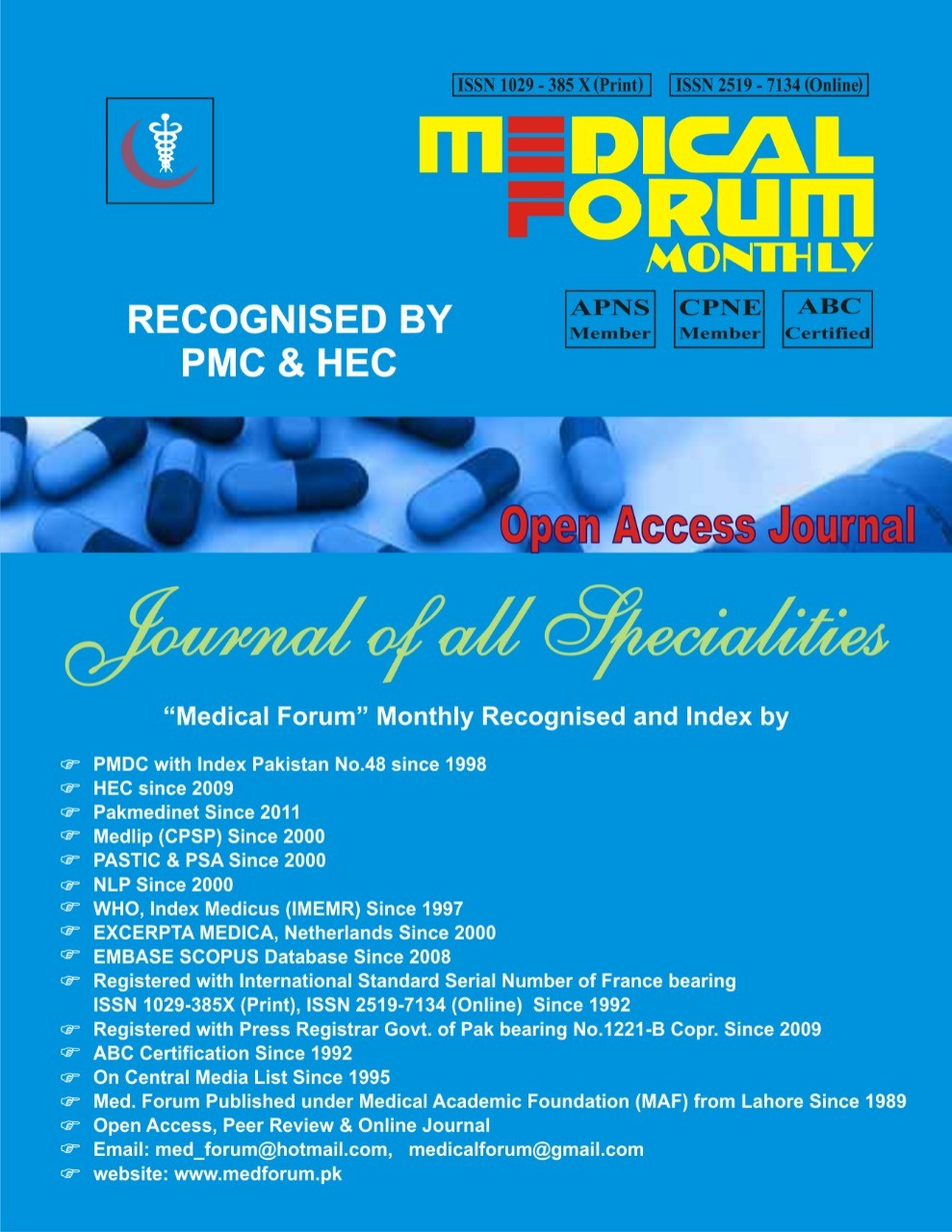
1. Frequency of Cardiac Arrest and Arrhythmias Associated with Admitted Patients in the Cardiac Care Unit in Hazara Division
Sardar Fawad Gul1, Mohsin Khan2, Mohammad Imran Khan3, Zia Qamar2, Adnan Haider2 and Zulqarnain Dilawar1
ABSTRACT
Objective: The present study will determine the arrythmias proportion associated with sudden cardiac arrest in patients admitted to cardiac care unit.
Study Design: Cross-sectional study
Place and Duration of Study: This study was conducted at the Cardiology Department of Ayub Teaching hospital from April, 2023 to November, 2023.
Methods: The patients who needed cardiac resuscitation were accessed and were included in current study. We recorded initial cardiac rhythm, features of cardiac arrhythmia, demographic variables, comorbidities, and in-hospital complications till the patient’s discharge. The categorical variables were presented in terms of percentages while continuous variables were presented as mean and standard deviation. Analysis of variance and chi-square was used to measure the significance which is kept less than 0.005. The data was analyzed using SPSS version 21.
Results: A total of 220 patients met the inclusive criteria and had SCA. The mean age of the studied sample was 65±9 years. The most common rhythm analyzed initially was VT in 32% (70) of individuals followed by PEA in 24% (53). Myocardial ischemia was found to be the most common immediate precipitating cause of arrhythmias (38%). ROSC was attained in 47% of patients, among which 58 patients survived to discharge (STD). PEA carried the worst mortality overall among cardiac arrhythmias while VT had the most favorable outcome with a proportion of 48.5% (34/70).
Conclusion: We concluded that shockable rhythm i.e. VT is still prevalent in developing countries like Pakistan while globally the behavior of arrythmias has been changed to non-shockable rhythms of unknown cause. The patients among which ROSC was restored within 5-10 minutes survived to discharge with good neurological status. However, it was observed that as the time for ROSC is prolonged, the neurological outcome and survival rate declines. Overall, PEA carries the worst mortality.
Key Words: Cardiac care unit (CCU), shockable rhythm, cardiac arrythmias, resuscitation, restoration of spontaneous circulation (ROSC).
